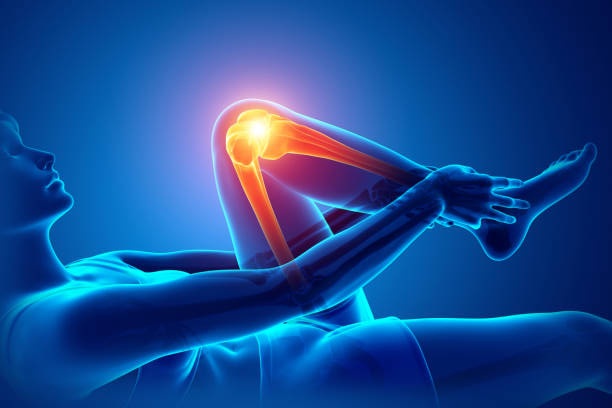Knee Replacement
The artificial replacement of a knee can be either partial or total.
Whichever type is engaged, it does involve removing some of the bone and cartilage from the joint and replacing the worn surfaces with metal and plastic. Occasionally bone cement (grout) is used to secure the metal on the bone.
In total knee replacements, the entire lower end of the thigh bone is resurfaced, the entire upper end of the shin bone is resurfaced and more often than not, the wearing surface of the kneecap (the patella) is also resurfaced.

The metal typically used to resurface the lower end of the thigh bone (the femur) is an alloy of cobalt and chrome.
The material used to resurface the upper end of the shin bone (the tibia) is titanium.
Rather than having the two metal surfaces rub together, a plastic or polyethylene piece is attached to the shin bone tray. This is a so-called “interposition arthroplasty” with the plastic interposed between the two metal surfaces. The kneecap component (the patellar component) is also made of polyethylene.
Knee replacements were first performed in the mid to late 1960’s. Considerable advancements were made during the 1970’s and 1980’s.
Revision Knee Replacement
Whilst most knee replacements do perform very well and 90% of them are still functioning 20 years after insertion, some knee replacements fail prematurely. The reasons for premature failure can include infection, fracture, loosening or excessive wear.
Whatever the reason, a revision knee replacement is a major undertaking.
The surgery is more difficult than the primary replacement, requires special skill on the part of the Orthopaedic Surgeon and special ancillary support within the hospital environment.

The rehabilitation procedure is usually longer and more difficult. The outcome is usually less certain than the primary knee replacement surgery.
Whilst revision knee replacement is not to be sought after or revered, it is sometimes unavoidable. This is an issue that your Orthopaedic Surgeon will discuss with you very carefully.
Partial Knee Replacement
Some patients who have failed a thorough non-operative therapeutic programme and still have pain that is intolerable, will not require a total joint replacement. That is, of the three compartments in the joint – the medial compartment, the lateral compartment and the patellofemoral compartment – it may be that only one of those compartments is truly degenerate.
In this special circumstance, a so-called “partial knee replacement” can be performed. It is usually restricted to the medial compartment of the knee but sometimes it can be performed in the lateral compartment or the patellofemoral compartment.

The results of partial knee replacement, whilst good, are not necessarily as good as those for a total knee replacement.
In addition, should a partial knee replacement fail and it requires conversion to a total knee replacement, the results are even less certain.
For these and many other reasons, not all Orthopaedic Surgeons favour partial knee replacement.
This is an issue that you should discuss very carefully with your Orthopaedic Surgeon.
Knee Arthroscopy
The term “arthroscopy” is of Latin origin. The word “arthro” means joint and the word “scopy” means telescope or viewing instrument.
An arthroscope is a long, thin device (a little bit like a straw) which has an eye piece attached to one end. The narrow end can be passed into a knee joint through a tiny nick in the skin. This is so-called “keyhole surgery”. The arthroscope (or telescope) has a solid state camera attached to the eye piece end. A cable runs off to a colour television set and whilst the Orthopaedic Surgeon is sitting beside the patient, moving the viewing end of the telescope in and around the joint, he or she is usually looking at the television screen overhead.

The modern arthroscope is an outstanding device. It allows excellent and direct visualisation of almost every part of the joint. It is orders of magnitude better than it was 30 years ago when we used to open the joint to inspect the meniscus or the ligaments or the cartilage.
Knee arthroscopy is usually performed under a general anaesthetic but it can be performed under local anaesthesia or even regional anaesthesia. Three small nicks in the skin are usually used. One is for the insertion of the arthroscope, one is for the insertion of instruments that can be used to trim, shave or smooth the joint internally and the third is for the insertion of a drainage tube. Whilst the Orthopaedic Surgeon is performing the arthroscopic procedure, the joint is being washed or lavaged with an appropriate solution. This aids visualisation using the arthroscope and also removes debris or rubbish from the joint.
